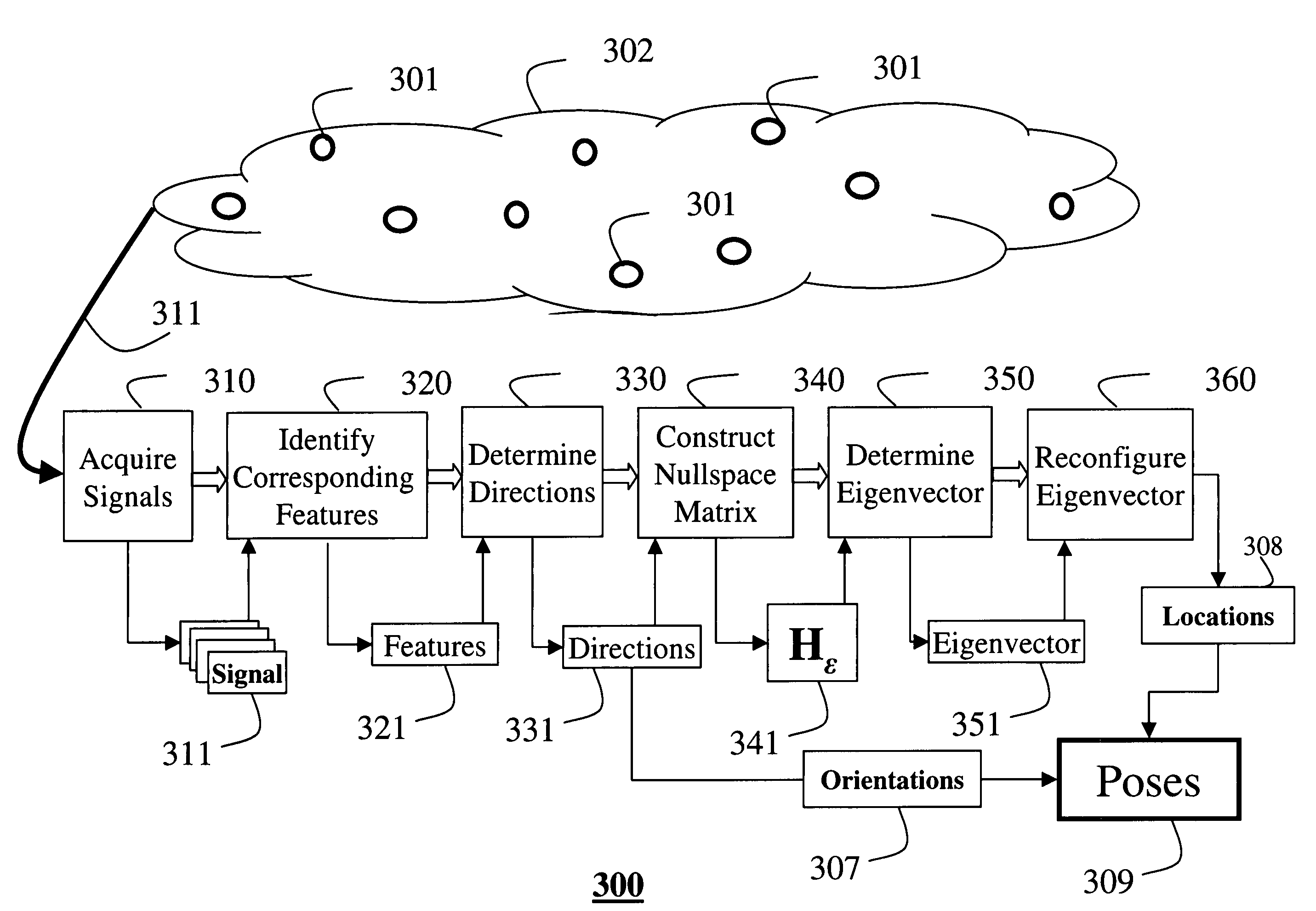Method for determining poses of sensors
a technology for sensors and poses, applied in direction finders, direction finders using radio waves, instruments, etc., can solve the problems of insufficient constrained problems, decomposition and other problems, and achieve the effect of simple and fast implementation, stable number of results
- Summary
- Abstract
- Description
- Claims
- Application Information
AI Technical Summary
Benefits of technology
Problems solved by technology
Method used
Image
Examples
Embodiment Construction
System Structure
[0023]FIG. 1 shows sensors or ‘nodes’101–102, e.g., cameras. A method according to my invention determines the poses of the sensors by analyzing signals 111–112, e.g., images, acquired by sensors. As a characteristic, the signals are acquired of a large environment, for example, an urban area, or a portion of the universe. Each signal has only a small number of features 121 in common with another signal. Consequently, the signals are said to be sparse.
[0024]The method according to my invention treats this problem as a graph embedding problem. Prior art solutions typically constrain a pose of a node by linear mixtures of directions to neighboring nodes, with a known mixture weights, see Roweis et al., “Nonlinear dimensionality reduction by locally linear embedding,” Science 290, pp. 2323–2326, 2000.
[0025]Similarly, my method constrains node poses to be linear mixtures of directions 131 between nodes and features 121, however, with an unknown mixture weights. The direc...
PUM
 Login to View More
Login to View More Abstract
Description
Claims
Application Information
 Login to View More
Login to View More - R&D
- Intellectual Property
- Life Sciences
- Materials
- Tech Scout
- Unparalleled Data Quality
- Higher Quality Content
- 60% Fewer Hallucinations
Browse by: Latest US Patents, China's latest patents, Technical Efficacy Thesaurus, Application Domain, Technology Topic, Popular Technical Reports.
© 2025 PatSnap. All rights reserved.Legal|Privacy policy|Modern Slavery Act Transparency Statement|Sitemap|About US| Contact US: help@patsnap.com



